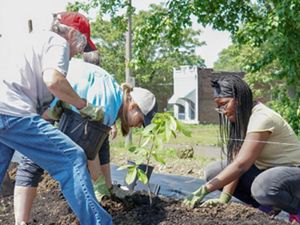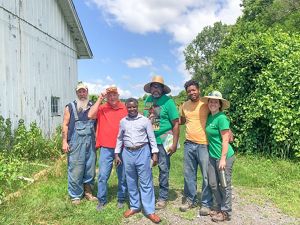Green spaces play a key role in the development of sustainable, vibrant and livable communities, providing positive social, economic and environmental outcomes. Access to nature can also provide numerous health benefits, including lower stress levels, relief of ADHD-related symptoms and lower prevalence of asthma.
In the urban core, welcoming, naturalized outdoor spaces are sometimes in short supply, especially for children. In 2020, The Nature Conservancy partnered with Saint Louis Public Schools (SLPS), the Missouri Department of Conservation (MDC) and other local stakeholders to launch a green schoolyard pilot program.
Enhancing Learning Experiences and Encouraging Creativity
“All too often, our students lack access to safe outdoor spaces where they can dream, explore and play,” said SLPS Superintendent Dr. Kelvin R. Adams. Froebel Literacy Academy, an elementary school in south St. Louis, will receive the first-ever green schoolyard in the St. Louis region.
“Establishing a sizable green space at Froebel, which has been an integral part of the city for 125 years, will enhance the learning experience for our students and be a welcome addition to the Gravois Park neighborhood,” said Dr. Adams.
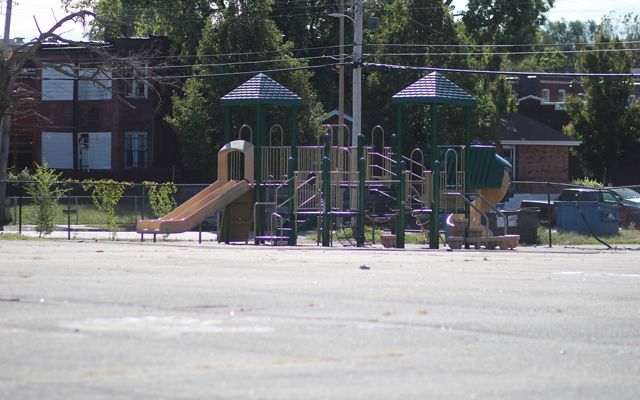
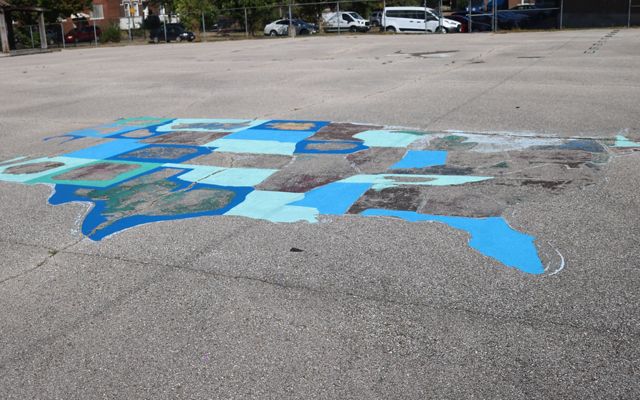
Leanne White, project director for Green Schoolyard and the Healthy Schools Movement agrees. “Not only am I happy to see the positive impact this opportunity provides, but I am so pleased with how this project aligns with the priorities of the SLPS Healthy Schools Movement: reducing childhood obesity, empowering students to engage in more active lives and creating healthier school environments.”
Quote: Dr. Kelvin R. Adams
All too often, our students lack access to safe outdoor spaces where they can dream, explore and play.
Co-Creating a Healthier Environment for Students
The success of this project hinges on cooperation from the school community, partners and neighborhood residents. “TNC is excited to be supporting this collaborative partnership that aims to increase the ecological health and resiliency of the St. Louis community by tackling stormwater challenges through meaningful community engagement and participatory processes,” said Rebecca Weaver, Cities Program Manager for The Nature Conservancy in Missouri.
MDC Community Conservation Planner, Josh Ward, also sees the value in teamwork. “We are proud to support the students, school and community in co-creating a healthier, greener schoolyard at Froebel Literacy Academy,” said Ward. “The project will achieve environmental benefits and help enrich students by connecting them to nature.”
Benefitting Nature and People
According to the Gravois-Jefferson Historic Neighborhoods Plan, a community-driven planning process adopted by the City of St. Louis, community members within the Gravois neighborhood are concerned about opportunities for youth, job opportunities, and local stormwater and flooding issues.
Given the high concentration of impervious, or water-resistant, surfaces in the area, and with Froebel holding one of the largest pavement footprints, the site was selected as a high-impact leverage point.
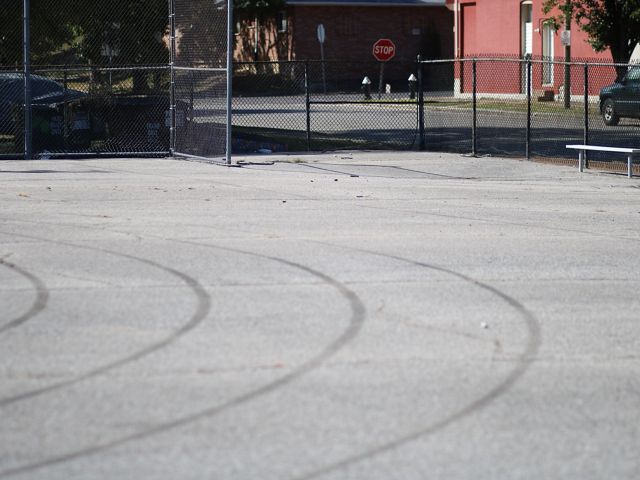
Quote: Amanda Colón-Smith
Access to nature is not just for the privileged few. This project has the opportunity to promote equity.
Dutchtown South Community Corporation (DSCC) is leading the community engagement effort. For Amanda Colón-Smith, executive director of DSCC, the project’s impact extends beyond neighborhood beautification and stormwater management.
It provides new outdoor spaces for students, youth and their families to enjoy, and invests in a community where nearly 40 percent of residents live below the poverty line. “Access to nature is not just for the privileged few. This project has the opportunity to promote equity,” said Colón-Smith.
Creating Communities for Future Generations
The project provides a framework for equitably siting green schoolyards with the greatest potential to create environmental, social and economic benefits, combining intentional community partnerships, meaningful community-led decision-making and multi-stakeholder dialogue.
The resilience and long-lasting nature of native landscapes contribute to the education, health and well-being of today’s youth, long-term stewardship and care for the environment and encourages dialogue about what type of communities we are creating for future generations.
Make a Difference in Missouri
Since 1956, we have worked to conserve the lands and waters that make Missouri unique and beautiful. Your support has helped us protect over 150,000 acres and we’ve still got a lot of work to do. Your donation will make a difference. We can't save nature without you.

